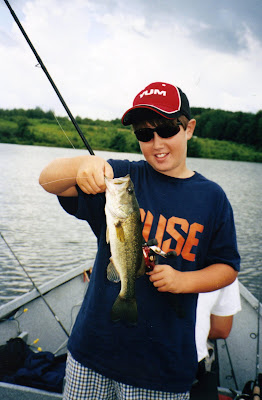
Traditionally, massive numbers of Lake Ontario salmon converge on Oswego County's inshore waters by mid-August. This year they were a little late, and even then only trickled in. Seeing's how summer's been whacked by a lot of southerly winds, and wetter than anyone can remember, some old salts predicted the returns would be disappointing.
Boy, were they wrong. Last week, salmon were pouring into the area--big ones, too, averaging 20 pounds. Currently, they’re cruising about a mile offshore, pigging out on alewives, instinctively putting on as much weight as possible in preparation for their arduous final act: running up the Oswego and Salmon Rivers to spawn.
As recently as last summer, herring was the bait of choice. This year, in its bid to get a handle on VHS and other diseases, the DEC banned the use of exotic bait fish on state waters. Since herring are rare around these parts, anglers have to adjust their tactics.
Some are switching to dodger and fly combinations. Capt. Jerry Giocondo of Catch 22 Fishing Charters, says the rigs are almost as productive as bait.
Still, tradition dies hard. A lot of guys are going back to using whole alewives. Problem is, the heads of typical cut bait harness are too small. Fortunately, Familiar Bite, a western NY outfit, has developed a head large enough to fit an alewife's.
I contacted Capt. Jerry to see how the bite's been and he invited me to go fishing for a couple hours to see for myself. Jessica Trump and Laurie Spicer, two of Oswego County Tourism's finest, tagged along to do the heavy lifting.
Jess responded to the first hit. The struggle was fierce. I swear I saw her biceps grow a ¼-inch during the battle. My arms got tired just watching.
And boy was she up to the job. Holding the rod like a Southern belle grasping a flag pole in the middle of a hurricane, she vocalized colorful protests running the gamut from "oh my gosh," to "this hurts," all punctuated with a wide variety of facial expressions.
But the fish was toying with her. Ten minutes into the fray, beads of sweat crowning her brow, the king flipped Jess the fin and spit out the bait, leaving her unfulfilled.
A few minutes later another rod tripped with the force of a catapult. Laurie went for it but by the time she got her hands on the pole, the salmon bit off.
With the score ‘fish 2, humans fishless’ we dragged lures and bait for another hour or so with no luck.
All wasn’t lost though. To our delight, the fish that got away grew bigger and bigger the more we talked about them.
Before long, the sun went down like a slow cannon ball dropping over the west. As we passed the lighthouse on the way in, its corona lit the background in an orange/pink hue.
We may have been skunked, but we were grateful for the spellbinding day etched into our memories.
 Here's Laurie holding a package of Familiar Bite's alewives, Lake Ontario's native answer to cut bait.
Here's Laurie holding a package of Familiar Bite's alewives, Lake Ontario's native answer to cut bait.






